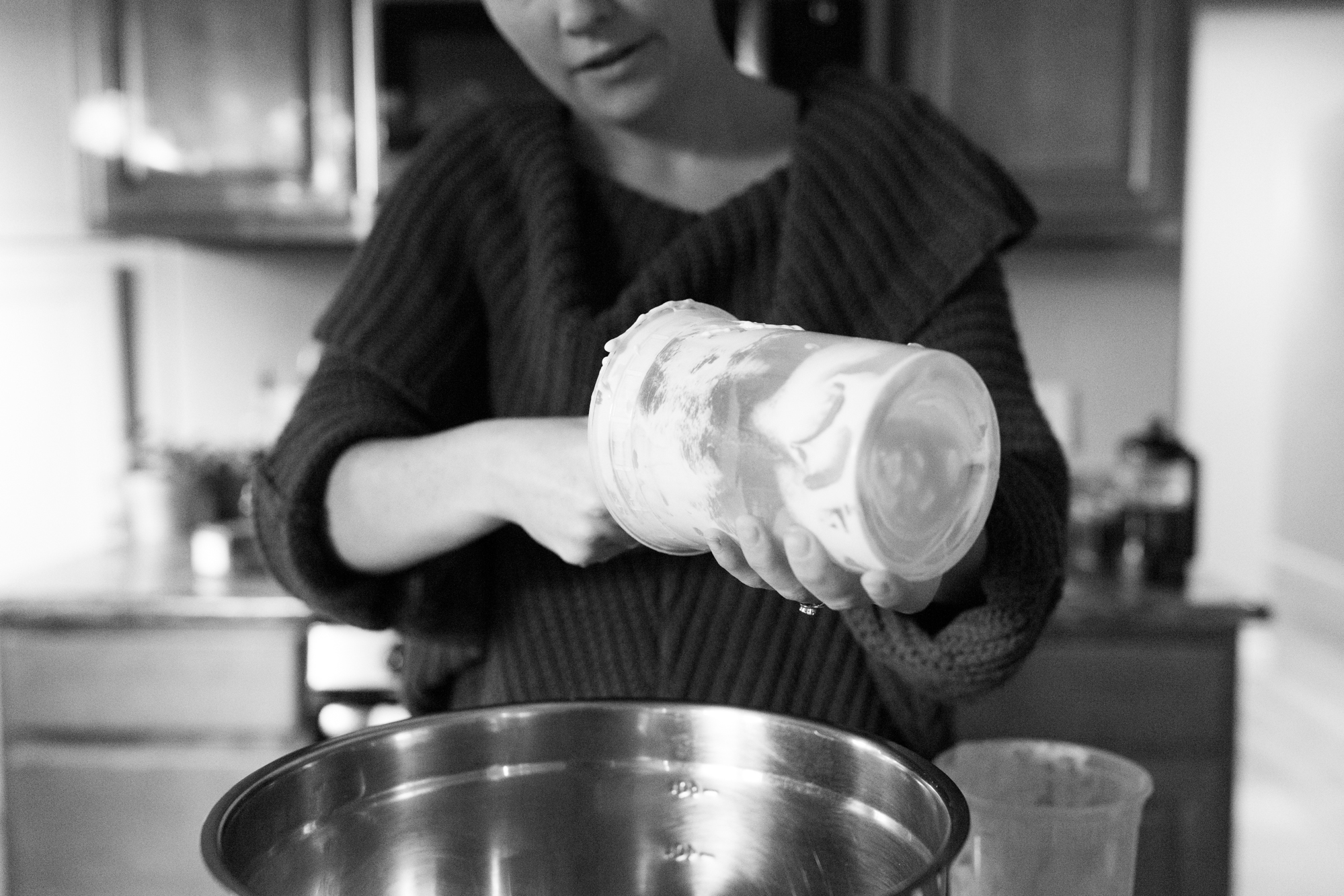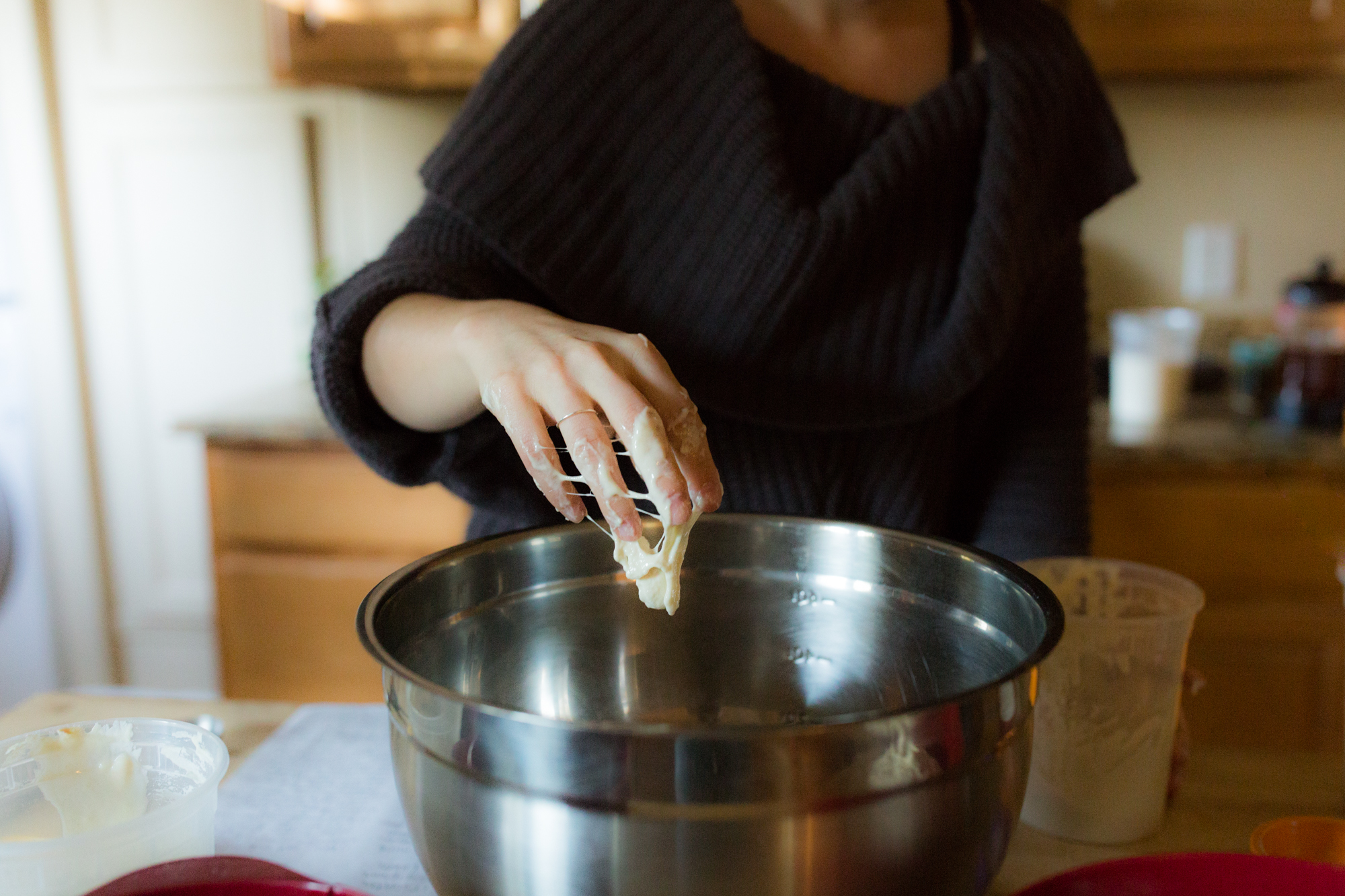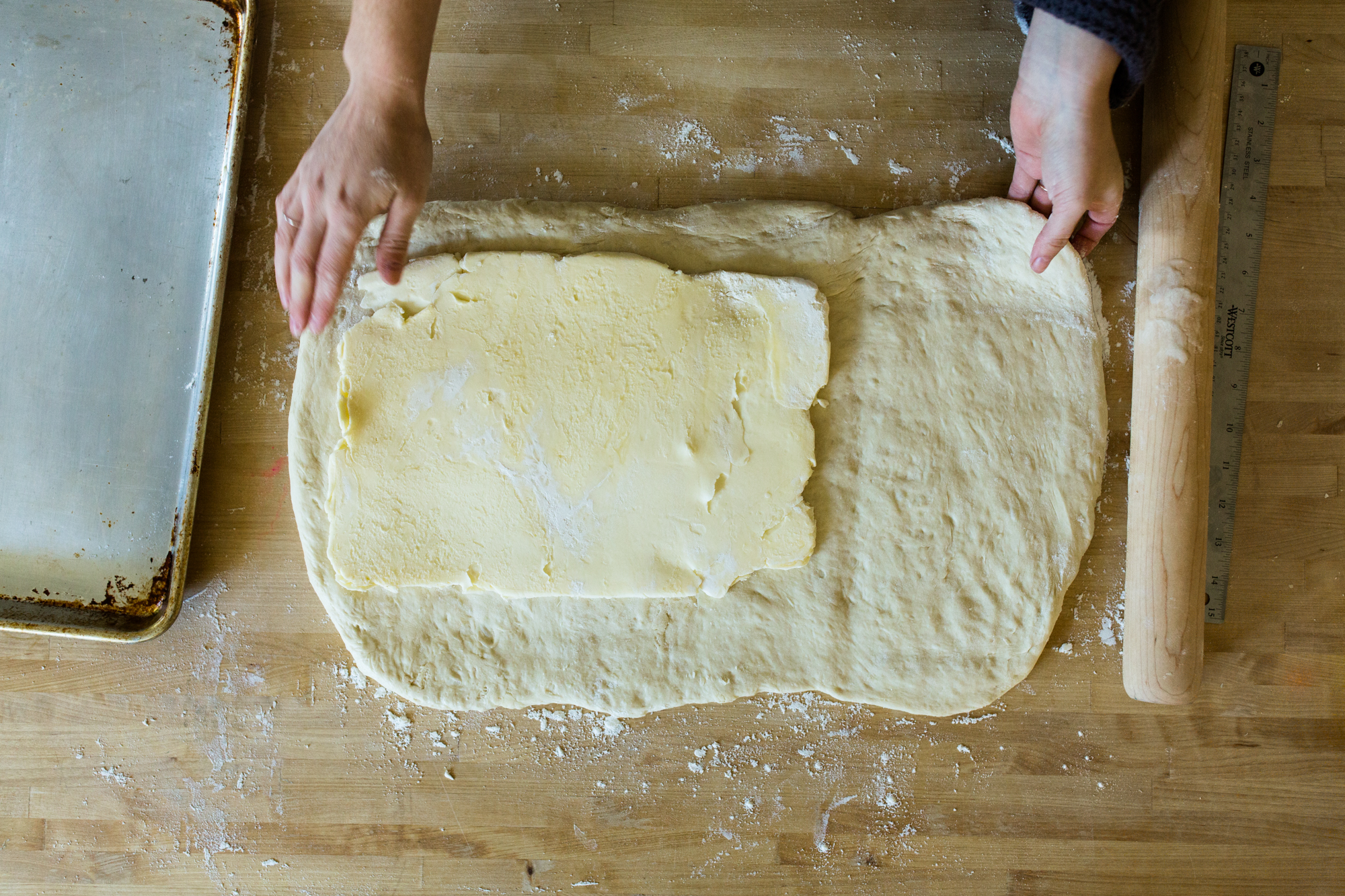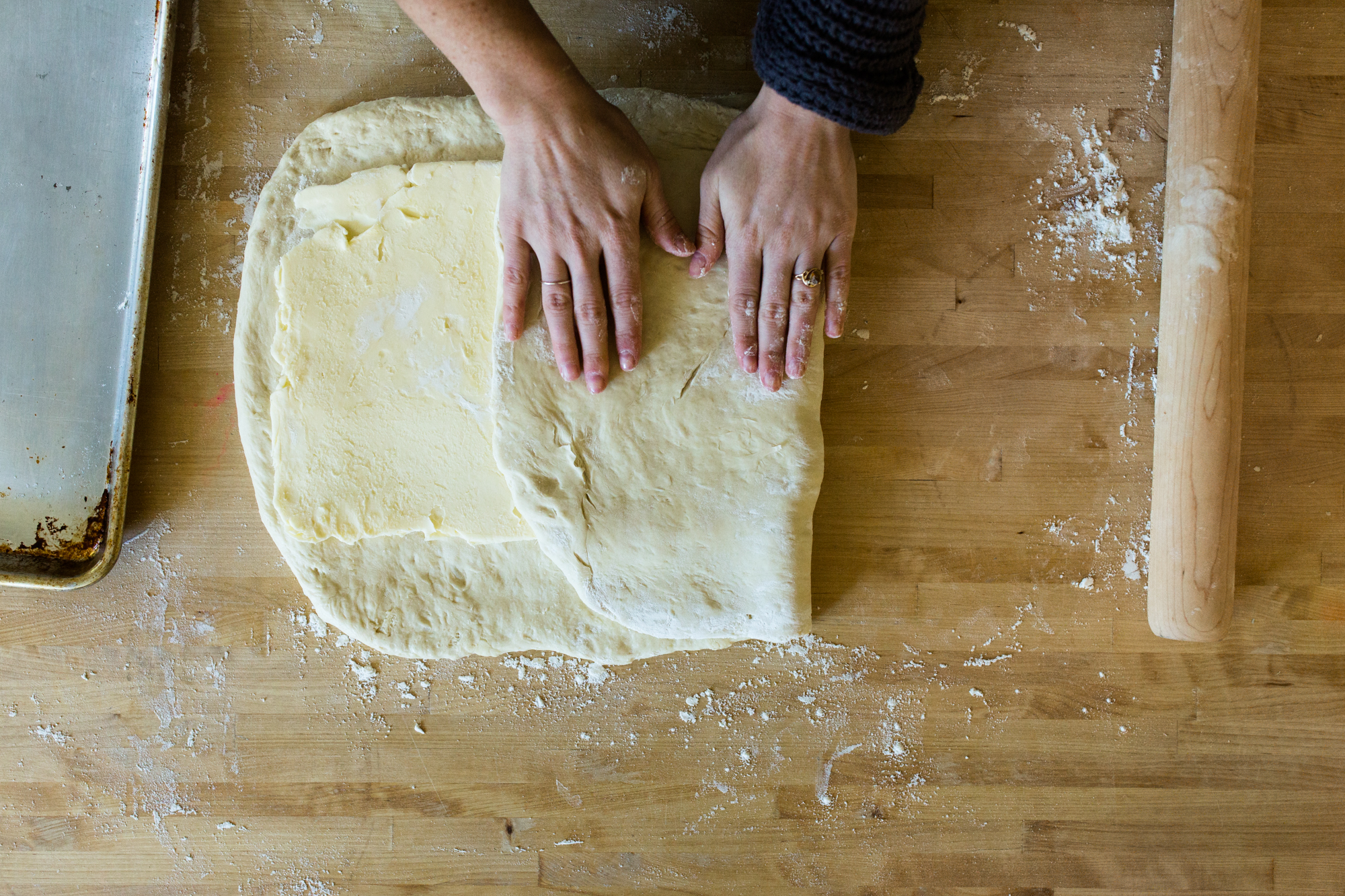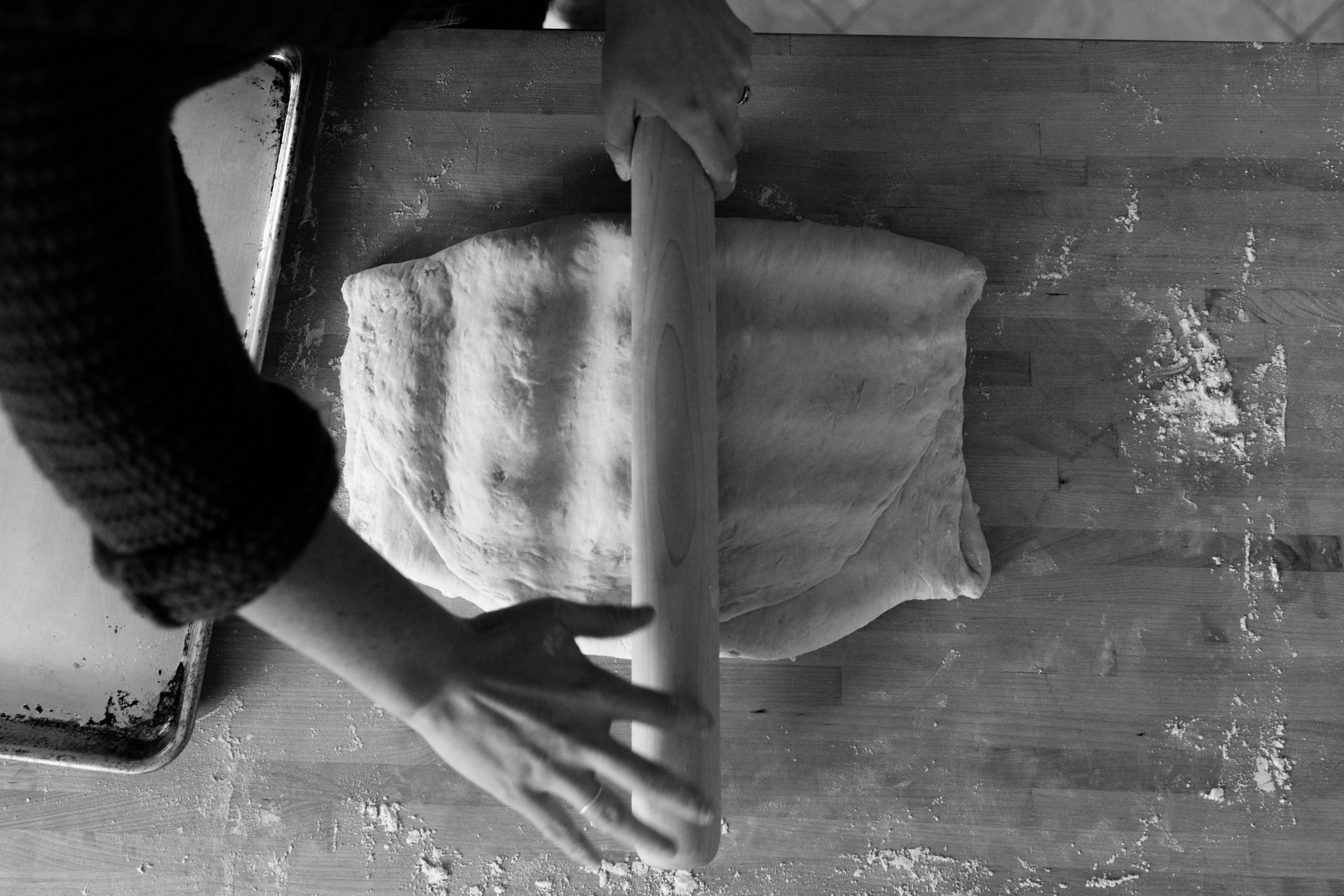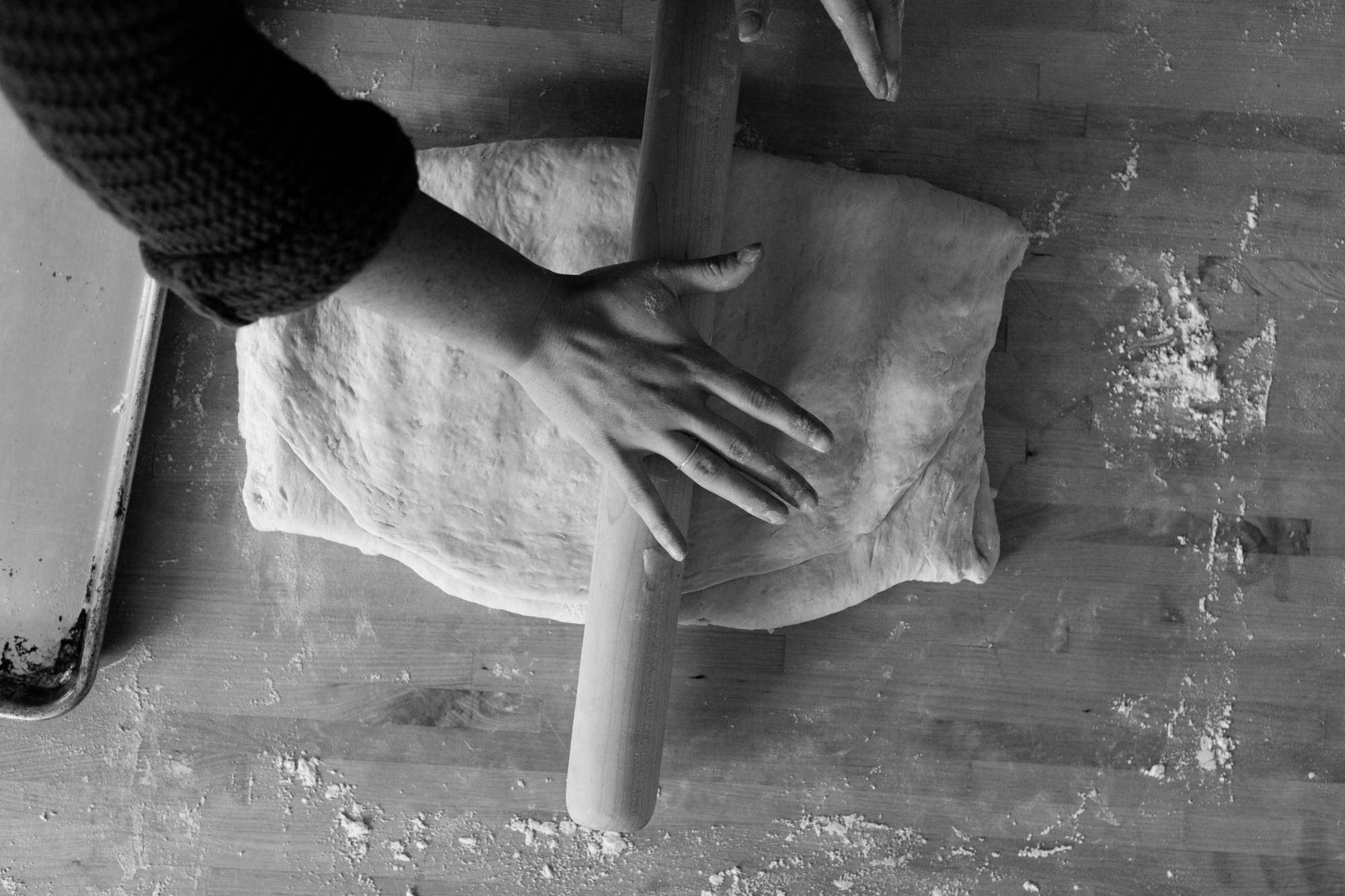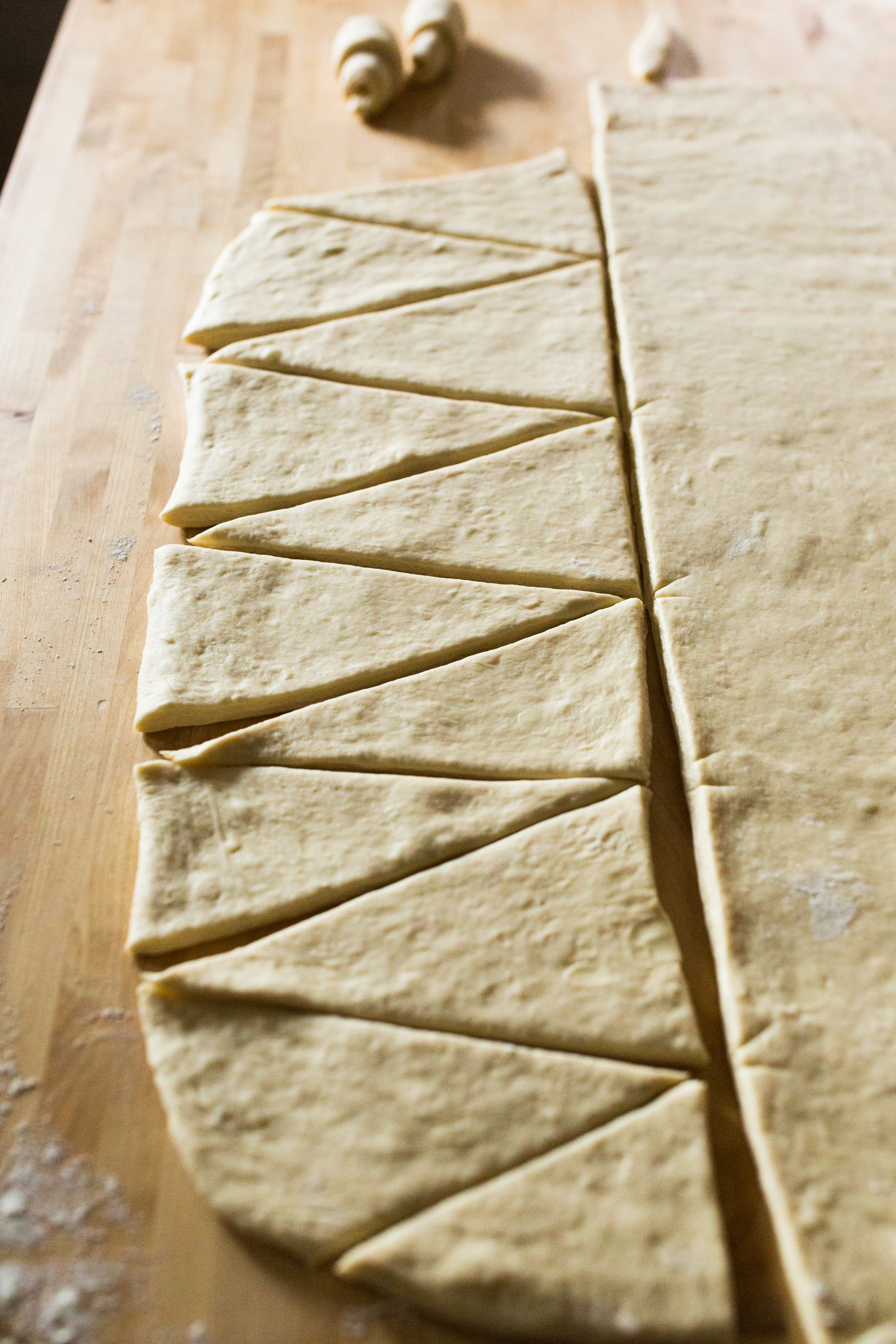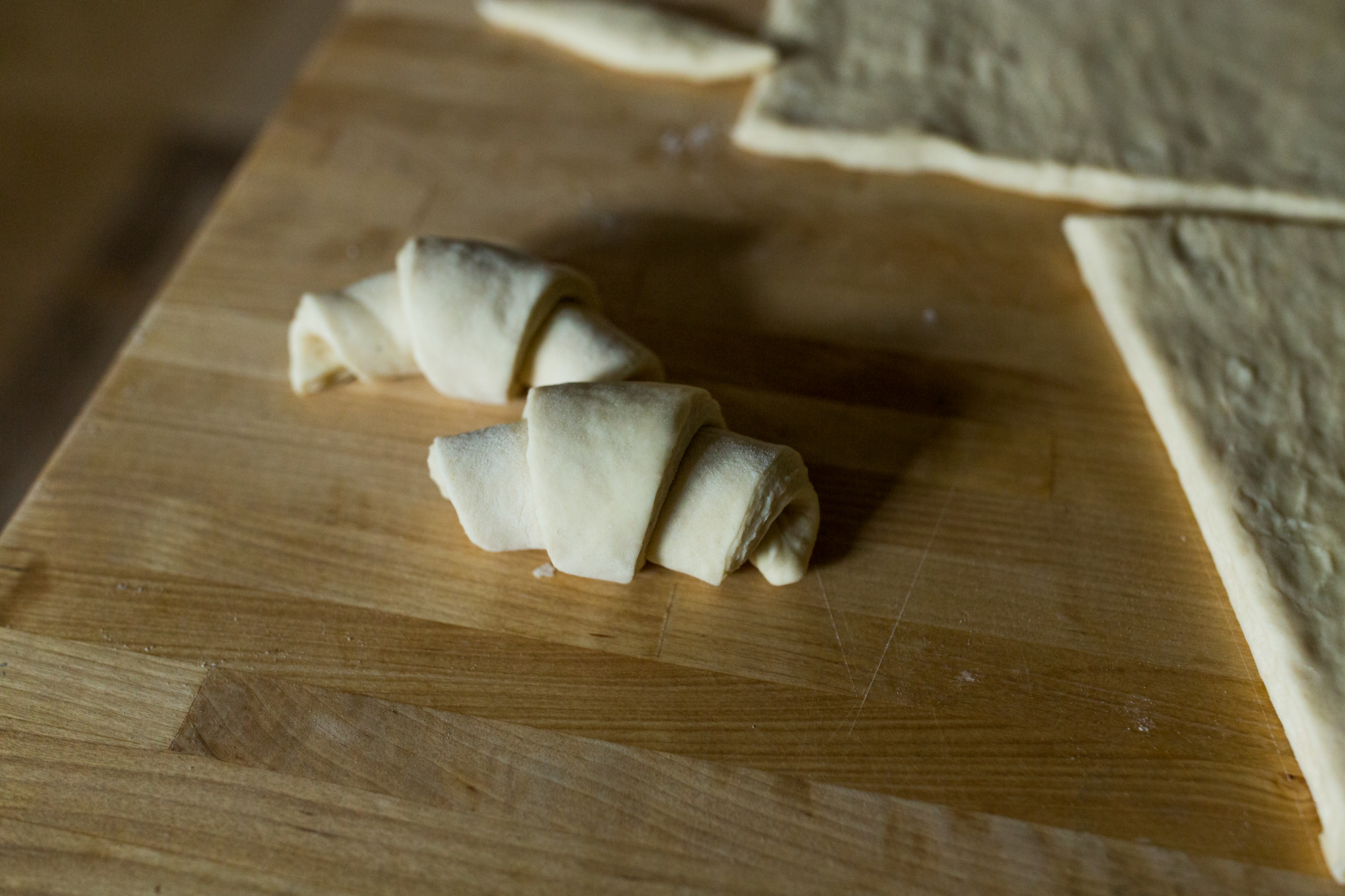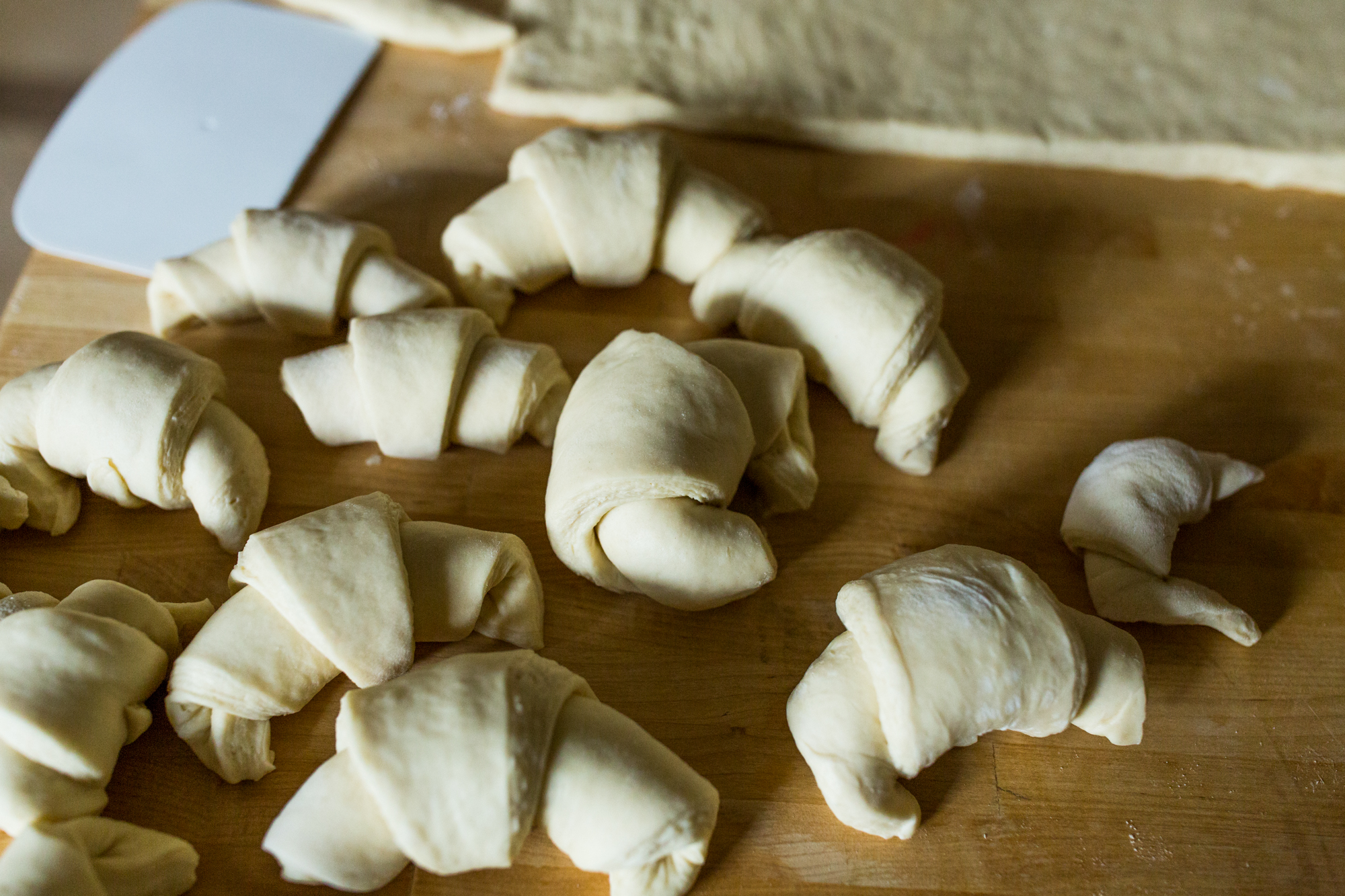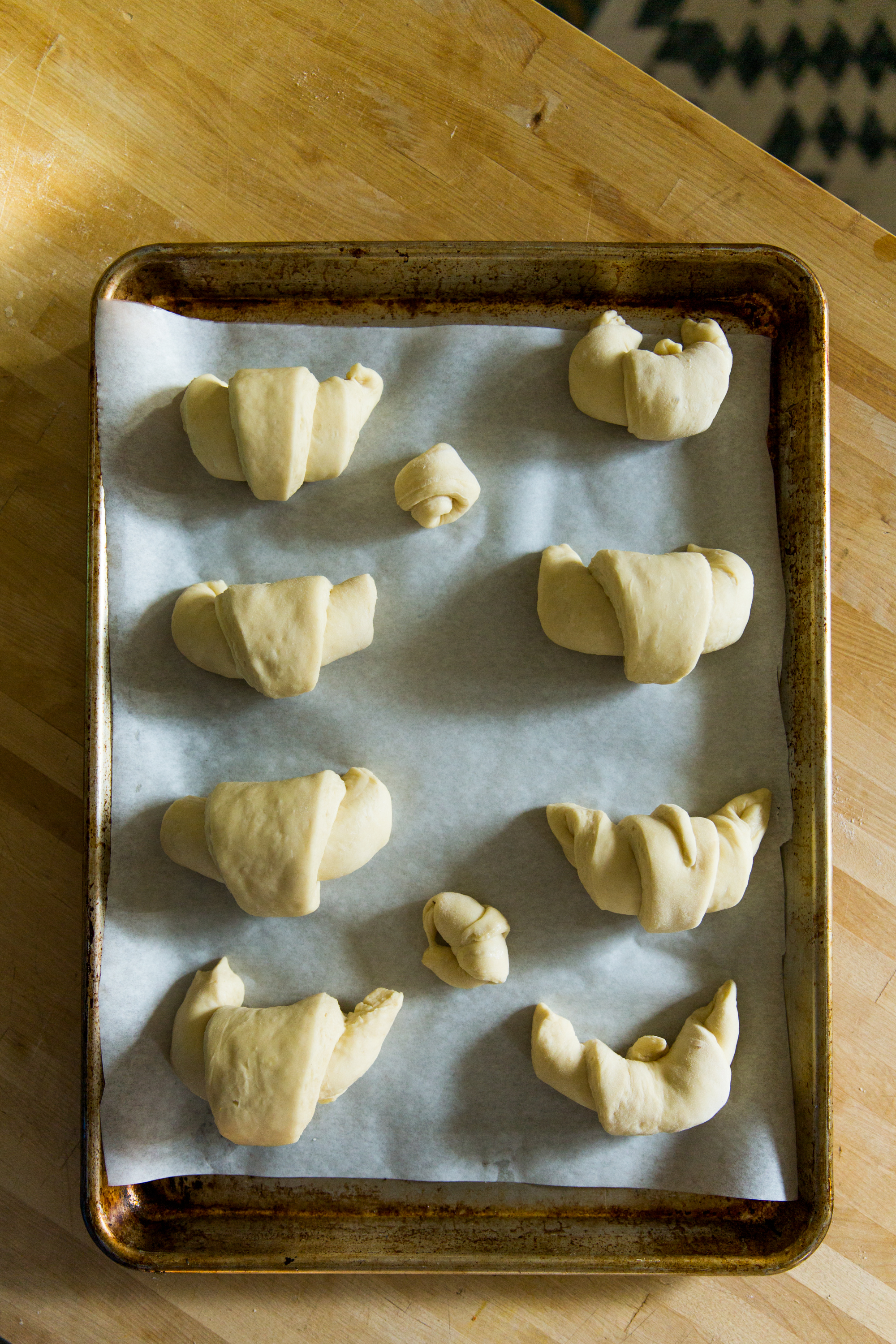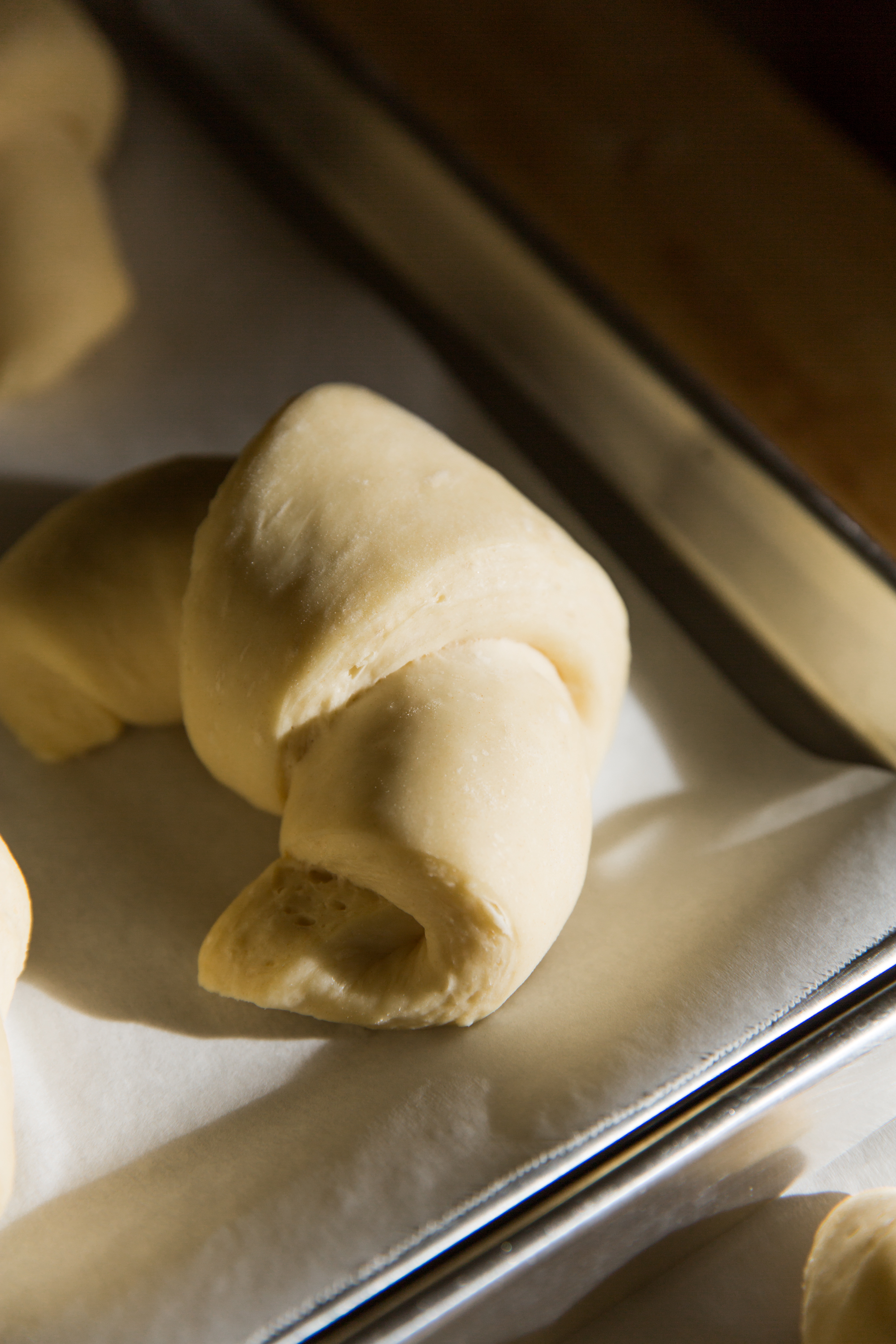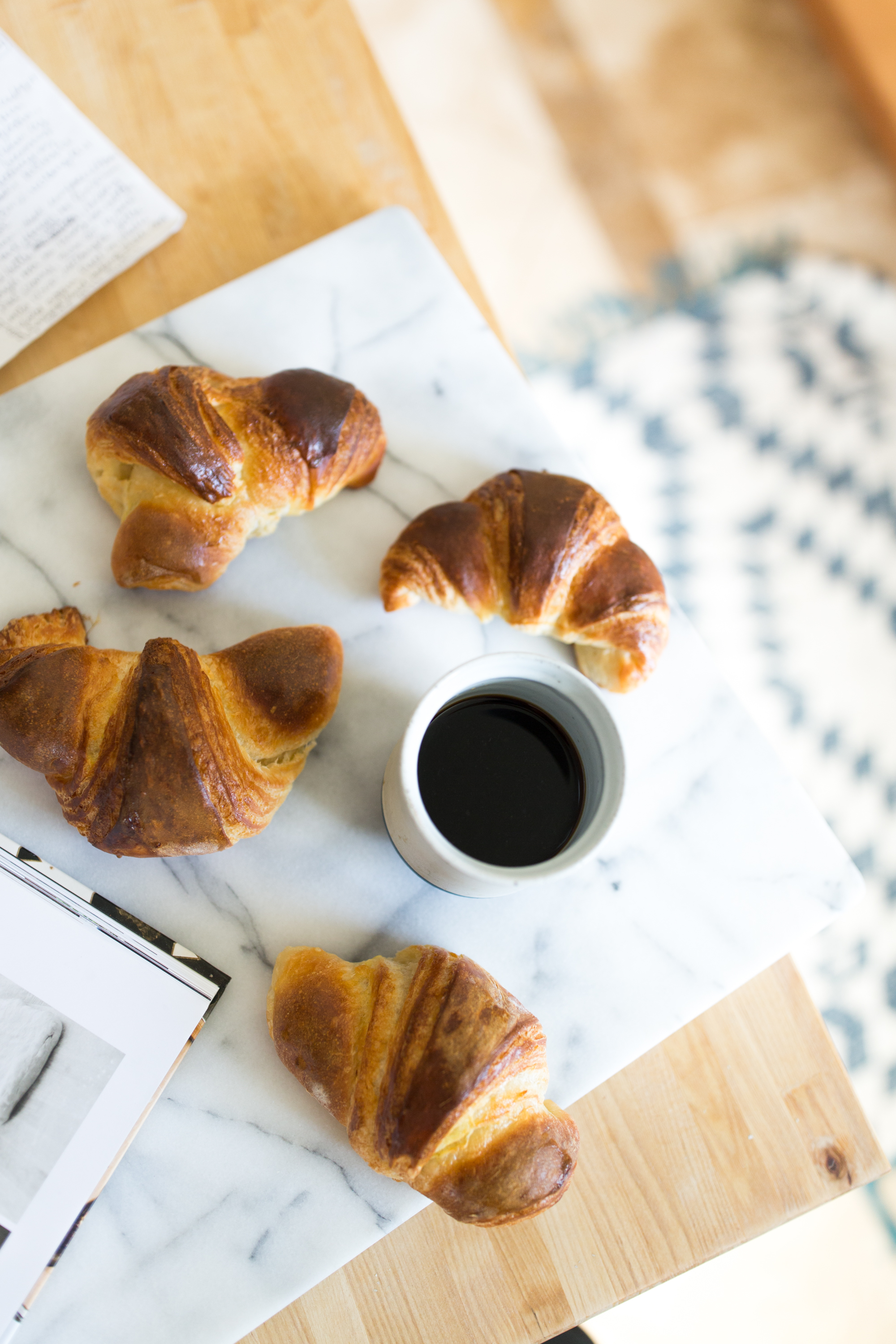If you're new to the pastry or bread making process, Tartine Bread is a great place to start. Chad Robertson walks you through history, technique, and generally makes you want to bake! So when Amy and I wanted to dive into croissant making, we headed there for his step by step instructions. I had made croissants through an online recipe before, but it called for active dry yeast, and I wanted to put my starter to work. But as we walked through the recipe, there were a few things that complicated the process, so if you ever want to make your own, these tips may help.
The croissant recipe in his book calls for a combination of natural levain, poolish, and a bit of active dry yeast. Poolish is a combination of active dry yeast, flour and water that is left to ferment overnight, leaving you with a mixture that is similar to that of a natural levain, but less acidic and "sour." This is where the first thing went awry.
Adjust Your Poolish
Both times that I've used Robertson's recipe for poolish (one other time for Brioche), it hasn't yielded as much of the mixture as the dough recipe calls for. You're instructed to add 200g of flour, 200g water, and 3g active dry yeast for the poolish and then let it rise 3-4 hours, or overnight in the fridge. His croissant recipe calls for 400g of poolish, but both times I've used his proportions, it has yielded no more than 350g of poolish. This means I don't have as much of a leavening agent in my dough.
Perhaps the Denver air, or the humidity or temp of my fridge is causing this, but regardless, the next time a recipe calls for poolish, I'm going increase the quantities by 25% to make sure it produces enough. In the end, we used a little extra natural levain to compensate. I wonder if this affected our rise or flavor?
When it came to mixing our dough, we ran into another small problem.
Utilize Your Stand Mixer
Chad suggests mixing your dough in a bowl by hand, but we ran into difficulty reaching a smooth consistency with this method. Both of us encountered massive clumps here and there that were difficult to incorporate. While you must be careful not to overwork the dough, using a stand mixer (as his wife does for her own recipe in the Tartine pastry book) yields a much smoother dough. Keep an eye on it, and turn off your machine as soon as you get a fully mixed and smooth dough. I'm all for mixing with my hands, but for this recipe it was more trouble than it was worth.
But rolling out the butter was where I had the most trouble.
Ziplocs To The Rescue
For a seasoned baker in a commercial kitchen, Robertson's instructions for molding butter into the perfect shape and consistency works. For us less experienced home cooks, things are a little different. Chad's instructions calls for beating and rolling flour into butter until the consistency is on par with the dough and measures to be an 8"x12" rectangle. By the time all of my flour was incorporated and my rectangle started to actually take shape, my butter had begun to melt to room temperature. For croissants, this is a disaster. Your butter and dough *must* be the same cool temp for lamination to work. I moved my sloppy mess to the fridge for 30 minutes and was then able to correct my mistake, but there is an easier way:
Grab a gallon ziplock bag.
Next time I'll be ditching the flour and rolling my butter out in a ziploc out until it is a perfect rectangle. HALLELUJAH. If it gets a little warm (which I doubt because this method makes it a much quicker process), chill the butter for about 30 minutes in the fridge. Then simply cut the bag off of the butter using kitchen shears. So. Much. Easier.
These three mall snafus aside, the recipe yielded gorgeous pastries that were flaky and buttery with that perfect gooey soft center. I'm in love.
Continue reading for more tips
Have a ruler close by so you can quickly measure your dough and butter. It makes everything a lot easier to actually hit the measurements that are called for.
When rolling your dough during each turn, make indentions with your rolling pin. This helps stretch and roll the dough a lot faster than just rolling alone.
Using a rolling pizza cutter the easiest way to get straight lines in your dough when shaping your croissants.
Don't let any dough go to waste: make some minis if you have a little extra dough. Just be sure to give them a little less bake time.





